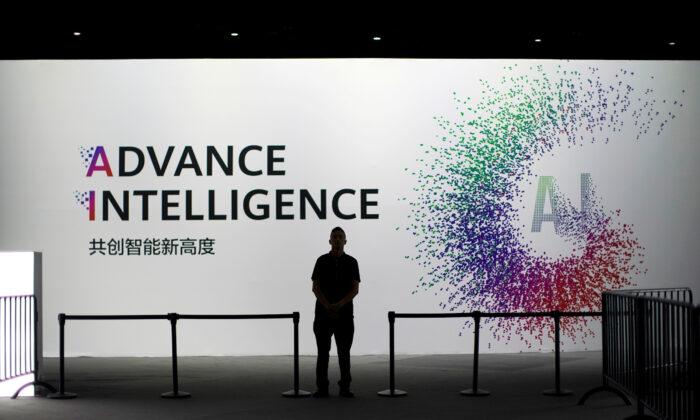China’s communist regime is outspending the United States in the realm of military artificial intelligence (AI), according to testimony received by Congress.
While the United States’ overall spending on AI outstrips that of the Chinese Communist Party (CCP), the United States isn’t matching the regime’s focus on the battlefield applications of the technology, according to Alexandr Wang, founder and CEO of software development company Scale AI.
Mr. Wang suggested during a July 18 hearing of the House Armed Services Cyber, Information Technologies, and Innovation Subcommittee that Chinese military spending as a percentage of total expenditures is 10 times higher than that of the United States.
“If you consider it as a percentage of their military investment, the [Chinese military] is investing somewhere between 1 to 2 percent of their overall budget into artificial intelligence, whereas the DoD is investing somewhere between 0.1 and 0.2 percent of their budget into AI,” Mr. Wang said.
In fiscal 2022, the U.S. defense budget was roughly $752 billion, far greater than the CCP’s $230 billion.
AI to Open ‘New Era of Warfare’
Mr. Wang said that the world is entering a “new era of warfare” that would be “defined by AI” in the way the Cold War was defined by the atomic bomb.To that end, he said, the question of whether the United States or China develops new military AI capabilities first could drastically shape the direction of global development.
“The country that is able to most rapidly and effectively integrate new technology into warfighting, wins,” Mr. Wang said.
“If we don’t win on AI, we risk ceding global influence, technological leadership, and democracy to strategic adversaries like China.”
Haniyeh Mahmoudian, global AI ethicist for tech company Data Robot, also testified that new strides in AI development would dramatically alter the nature of military conflict between great powers.
As such, she said, the United States would need to invest in regulatory frameworks to guide the technology’s development in addition to funding its advancement.
“AI holds immense potential and is increasingly becoming a component of modern military strategies and operations with the potential to profoundly impact operational efficiency and decision-making,” Ms. Mahmoudian said.
US Maintains Financial and Data Advantages Over China
While the CCP is investing record sums in its military AI, the U.S. government is spending much more contracting out AI work to the private sector. Its investments in the DoD’s AI programs are part of a wider investing scheme worth more than $3 billion.The United States, therefore, likely holds a financial edge over the CCP, although the regime doesn’t publish the amount of money that it’s funneling into its own companies for such efforts.
Mr. Wang, who went on an investor trip to China some four years ago, said the regime’s massive investments into surveillance, facial recognition, and drone swarm technologies were evidence enough that the race would be close.
The United States also maintains another advantage, Mr. Wang said: The quality of its data.
He said the Pentagon generates terabytes of actionable data every single day, which will allow it to better train and leverage its AI.
“Data truly is the ammunition that will power our future efforts in the military,” Mr. Wang said.
China’s repressive efforts against its own population, meanwhile, ensure that the regime does not have access to as robust and accurate data as the United States.
China and US in Race to Lethal Autonomous Systems
The subcommittee’s hearing occurred as both the United States and China are investing heavily in a broad array of new military technologies, with AI foremost among them.At the heart of the effort is the CCP’s goal of “intelligentization,” a transformation of warfare through the mass integration of AI, automation, and big data.
Such programs essentially point toward one end: The restructuring of the Chinese military into an increasingly centralized cadre of officers who direct swarms of AI-enabled autonomous systems to do the actual fighting.
Chairman of the Joint Chiefs of Staff Gen. Mark Milley said earlier in the year that he believes that the world’s most powerful armies will be predominantly robotic within the next decade, and that he means for the United States to achieve such a goal.
Toward that end, the Pentagon is experimenting with new unmanned aerial, ground, and undersea vehicles and seeking to exploit the pervasiveness of nonmilitary smart technologies, from watches to fitness trackers.





